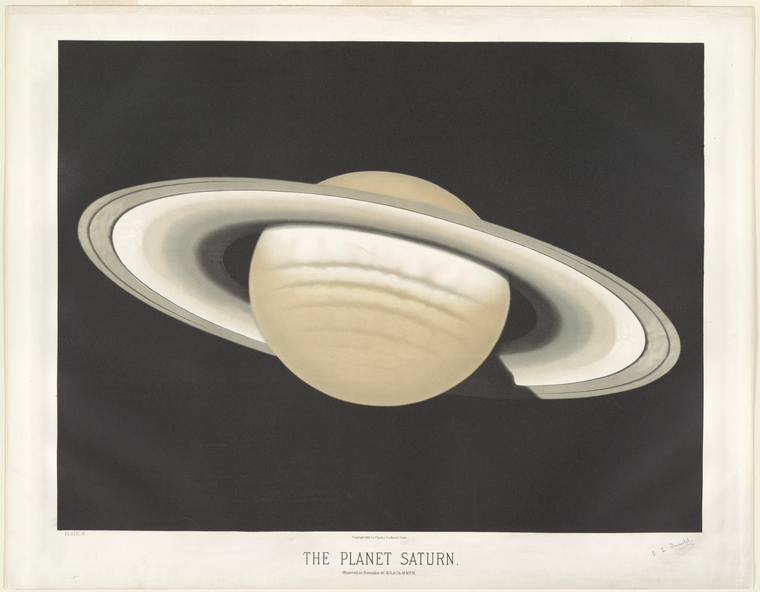Browsing through the New York Public Library (NYPL) Digital Library collection, I ran across Trouvelot’s drawing (well, chromolithograph) of the planet Saturn, as observed on 30 November 1874. A beautiful drawing at first glance, but as I looked at it more, I grew troubled. Care to guess what troubled me?
Aside from being (at least partially) responsible for introducing the gypsy moth to North America, Etiene Leopold Trouvelot worked for the Harvard Observatory and executed numerous drawings of “celestial phenomena as they appear to the trained eye and to an experienced draughtsman through the great modern telescopes.” A search through his drawings available from NYPL shows some pretty psychedelic stuff (check out his voluptuous, almost sexual sunspots), but given that astrophotography was still in its infancy, it makes sense that “an experienced draughtsman” would be given the task of reproducing what was seen through the eyepiece.
I have previously blogged on the challenges of using artwork as a basis of scientific communication, but I’m surprised by a major failing of this image—namely, the depiction of Saturn’s shadow on its rings. From Earth’s perspective (and presumably, Trouvelet was observing from a terrestrial vantage point), the Sun always appears to “our back” and Saturn’s rings look basically fully lit, with only a sliver of shadow at most—the highly angled, asymmetrical lighting shown in the image above simply isn’t possible. Furthermore, the shadow doesn’t appear to fall from the disk of the planet (it doesn’t line up properly), and it also suggests that the rings are not planar.
Given what was known 125 years ago about the solar system and Saturn, Trouvelet should have known better than to draw Saturn in this manner. It’s totally non-physical! And this is after he’d been working for Harvard for two years! And even if Trouvelet thought it appropriate, why would the astronomers for whom he worked allow such images to be printed?
I’m terribly confused…
This guy walked off with the Valz Prize from the Académie Française (whatever that is)? He even got a lunar crater named after him? And what exactly was his contribution to science? On the one hand, I would hope that he could have let go of some of his self-imposed prejudices (e.g., his art-deco Mars or his ouija-board meteors), but on the other hand, I wish he could have imposed more common sense on his drawings as well. Perhaps those are mutually exclusive, but looking at Trouvelet’s work, is it difficult to understand why people believed there were canals on Mars?

